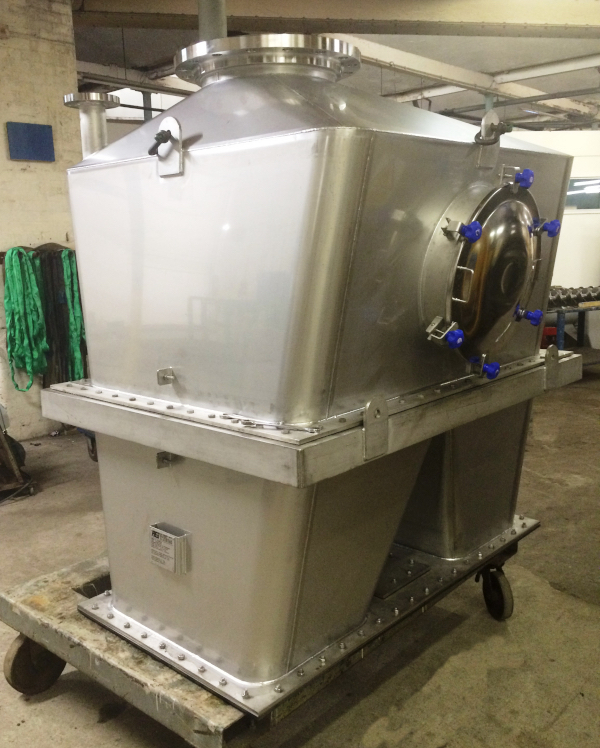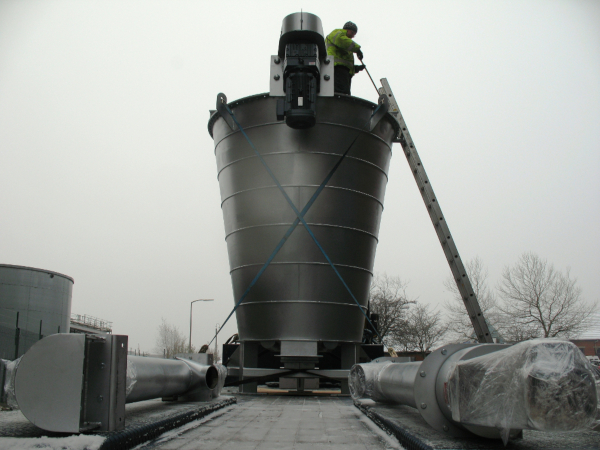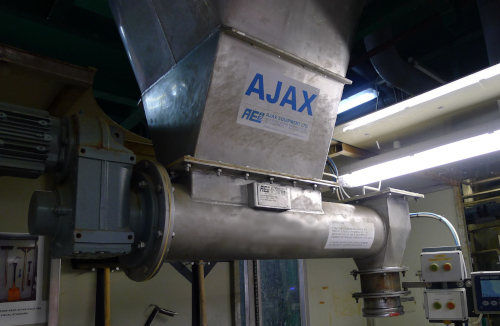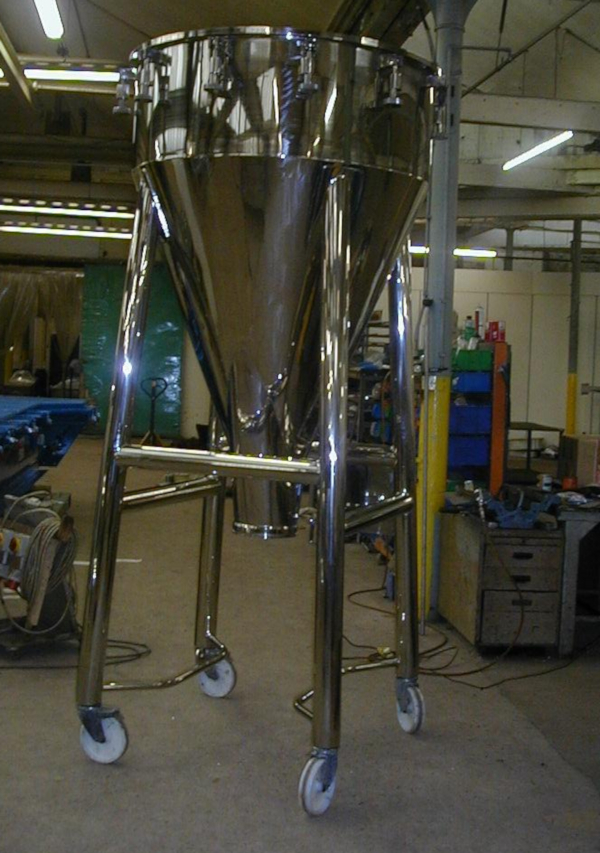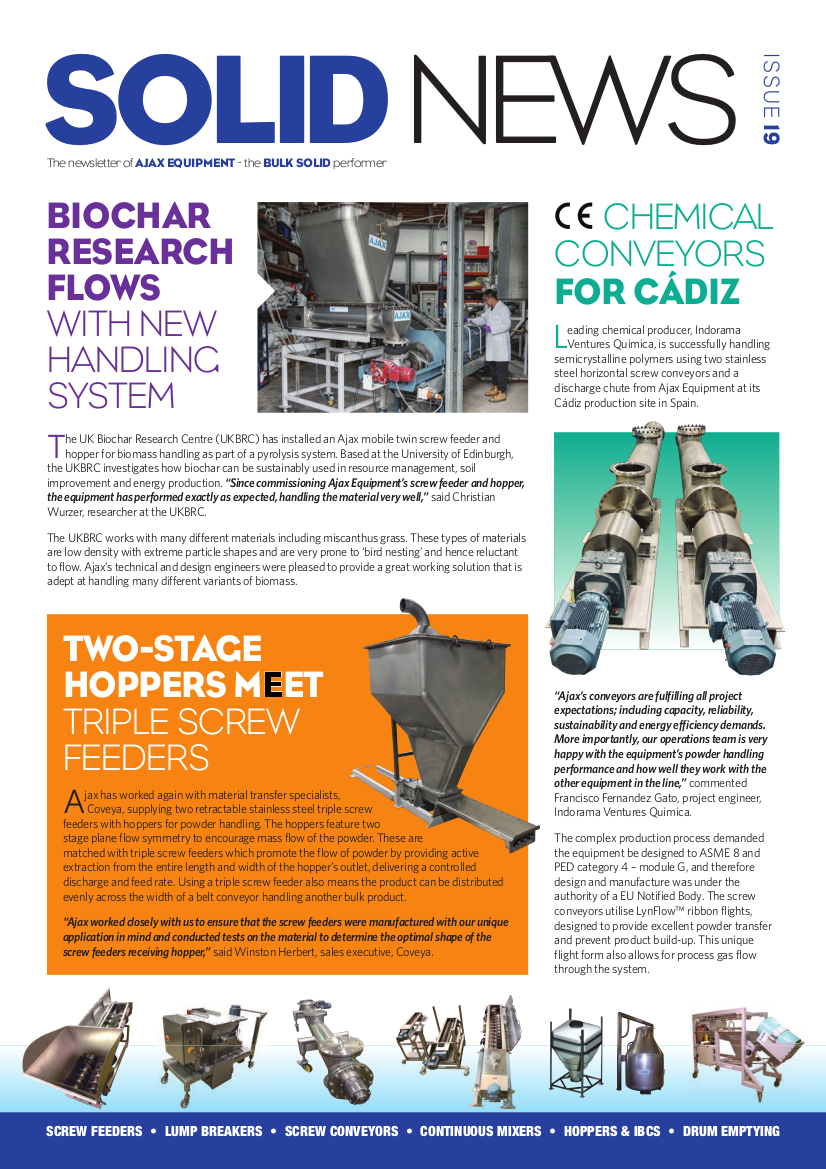Tips for Avoiding Powder Segregation
1) Avoid long repose slopes when filling hoppers. Use dispersing plates or 'overflow' pots with a small 'drain' to avoid 'single point' fill. However, take great care that any distributing device fitted has no feed or extraction bias, otherwise the situation can be exacerbated by eccentric flow.
2) A Mass Flow discharge pattern is a good re-mixing process for products segregated during filling a storage container. However, it is not a 'cure-all'. When the level of material in the storage system falls to transformation point at which the walls commence to converge, the velocity of flow in the centre of the cross section is higher than that at the walls. Consequently, the last portion of the contents of a batch to discharge comprises material originally local to the wall. With most repose fill situations from a single inlet feed point, this region comprises mainly coarse fractions. A central insert, (not necessarily circular), can help by distending the collecting flow channel to an annulus, to increase the area of draw-down, or dilute local aggregations by drawing product from multiple radial locations.
3) A Non-Mass Flow hopper can be completely suitable for storing and homogeneously discharging a material that tends to segregate. It all depends upon how the container is filled and the extraction pattern that is achieved during its discharge. With well dispersed in-feed, segregation is minimised and the pattern of discharge is then less significant. Simple plate inserts close to the container wall can be used to collect free flowing material from multiple points of the storage vessel, even in non-mass flow bins. Segregation can be remarkably reduced by means of 'Tributary' extraction to blend various zones of the stored contents into a single discharge stream. 'Laminated' plates offer even more feed tributaries, and can be applicable to conical, pyramid and Vee shaped hoppers.
4) Transfer batches of bulk, such as mixer discharge, as quickly as practical with maximum confinement. This restricts the time over which segregation processes can act, and reduces the dilatation of particulate structure that facilitates the differential migration of fractions.
5) Avoid biased transfer to process lines, conveyors or storage. For example, the flow stream of a belt conveyor delivering material to a hopper will eject the coarse further than the fines, allowing the separated size portions to land and slide down on the opposite sides of repose slopes of a forming pile. Material running from the side of an inclined chute will tend to allow fines to leave first and coarser product to carry further on the sloping surface. Any forward velocity on the receiving surface will tend to impart trajectory or inertial segregating mechanisms. Focus the flow stream, or intersperse a flow stream divider to divert multiple parts of the flow stream cross section to different receiving regions.
6) LynFlow
TM inserts can convert a Non Mass Flow hopper to Mass Flow, and provide multi-point extraction, to re-mix a bulk material that has segregated during filling of the hopper. Fitted onto the walls of hoppers these inserts modify the flow regime to preferentially draw material from regions close to the containing walls, so reducing the hoop stresses in conical hoppers, or the constraining stresses in Vee shaped hoppers, that resists deformation of the bulk in Mass Flow.
7) Consider particle modification to reduce the tendency for the material to segregate. Any physical difference may influence the propensity for particles to take diverging paths. Many different mechanisms influence how one particle moves relative to another, both independently acting when forces are acting on each particle, and when the particles are in contact with each other and the relative movement is a consequence of their relative interaction. When a predominant segregating process will be active in a given production facility, it is useful to review how this may be countered by 'mechanical' design means, by 'conditioning' the material to minimise or oppose the differential nature of the separating forces. For example, the addition of a tiny amount of moisture can severely inhibit segregation. Of course care is needed in addressing one difficulty, not to introduce different problems of a more objectionable nature.
8) Study very carefully where to take samples from. The 'Scale of Scrutiny' is a very important factor. Select as close as practical to the points of major significance and be cognisant of the subsequent handling sequence. Take running samples as a 'slice' from across the full flow stream. Be extremely careful with statistics, particularly in relation to stored batch quantities. Damning effects can flow from minor localities and inaccessible regions. How can representative samples be taken from the old of a ship, or even from a road wagon? Look to first principles and the fundamentals of segregation to find regions of significance. Read the 'User Guide to Segregation', published by the British Materials Handling Board. ( author - Lyn Bates )
9) Watch carefully the initial and terminal effects of both batch and normally continuous operations, Particularly if the product is stored at this stage, and refill takes place before total discharge. Modulating or attenuating techniques may be needed to avoid 'End Effects' at both the start and the completion of production feed streams.
10) Question whether it is practical to remove troublesome fines at an early stage of the production process and add them back under control later in an acceptable and well homogenised ratio. Some intermediary processes may be helped and the final product has a well controlled composition.
Remember -
Segregation is pervasive and pernicious. The place where the effects become apparent is not necessarily where the segregation process has taken place. The detectable results may be the consequences of accumulative behaviour, or even a partially rectified pattern, modified by later disturbances. CHECK THE TOTAL FLOW PATH.
Adverse influences of segregation appear in other guises to product quality. Excess dust, erratic poor flow, intermittent variation in drive power, hygiene problems, regular cleaning requirements, unstable density on volume filling and poor weight control, may all result from segregation.
'Give-away' to ensure conformity with statutory limits on stated weights come straight from the 'bottom line'. 'Down time' on production plant increases unit cost and incurs irrecoverable normal production capacity, on top of the extra labour costs for servicing. Product output is the life-blood of the business. Anything that interferes with smooth production is an unacceptable burden.
The cost of securing reliability is invariably cheap, when compared to the alternative.
